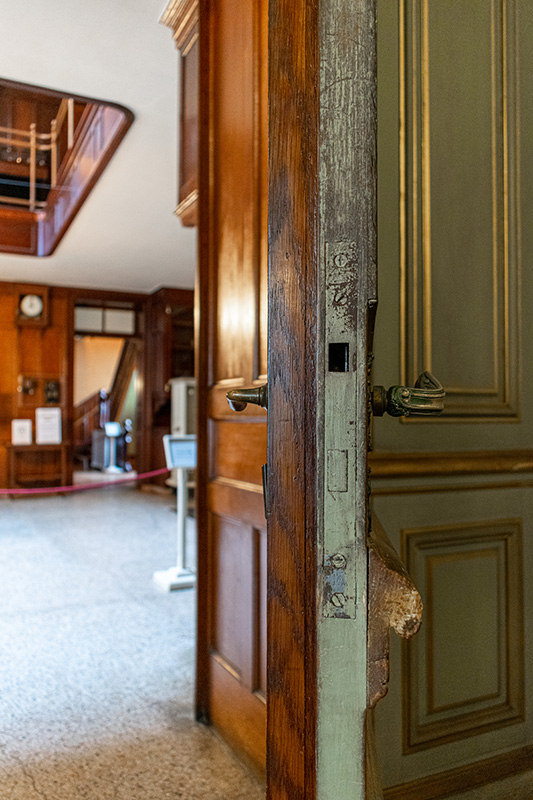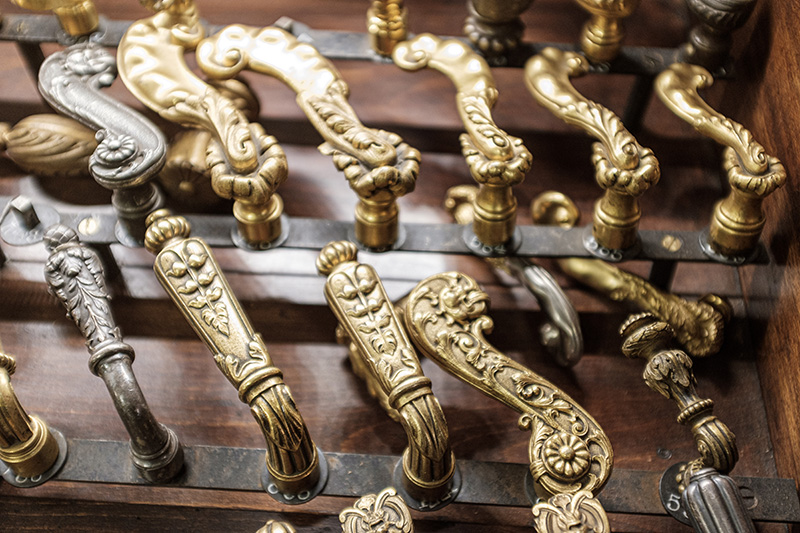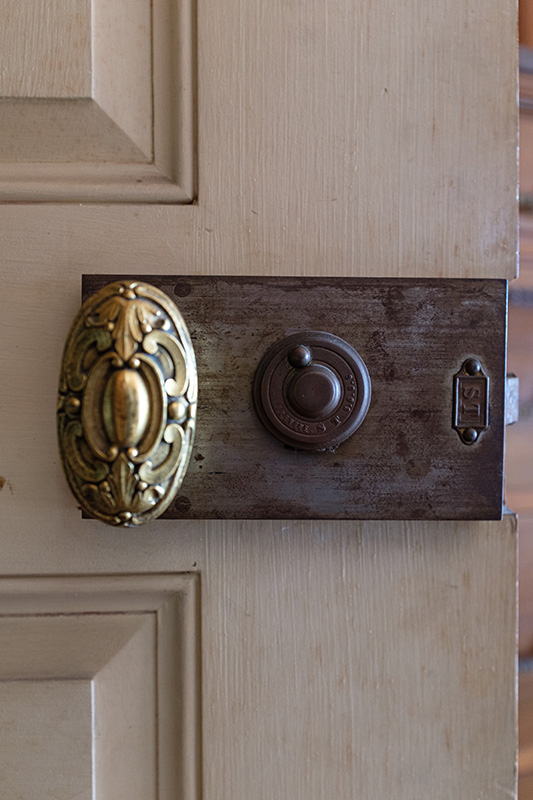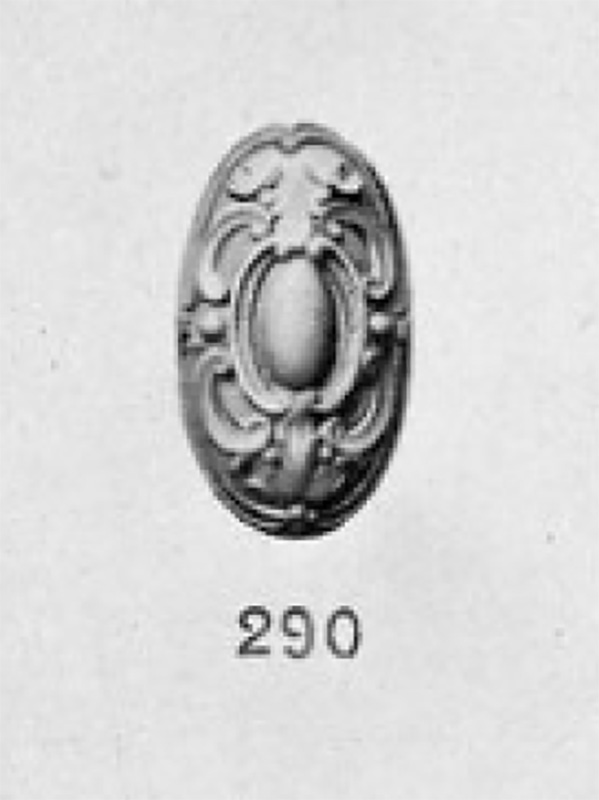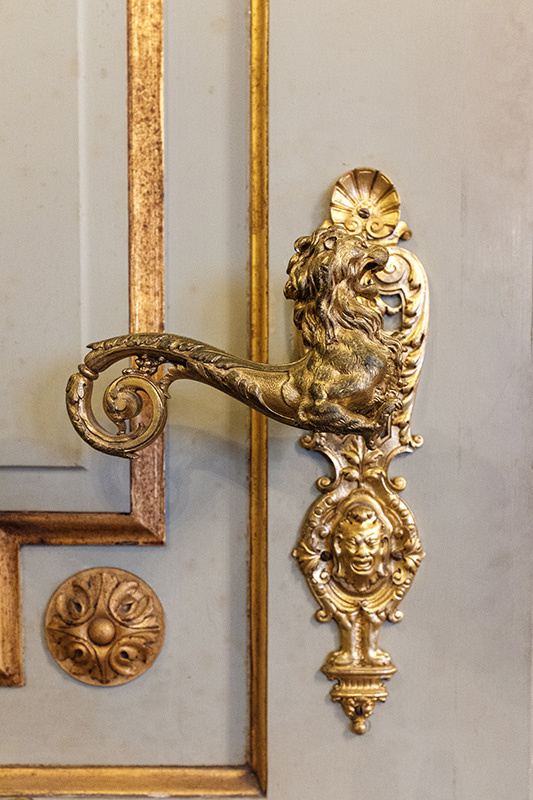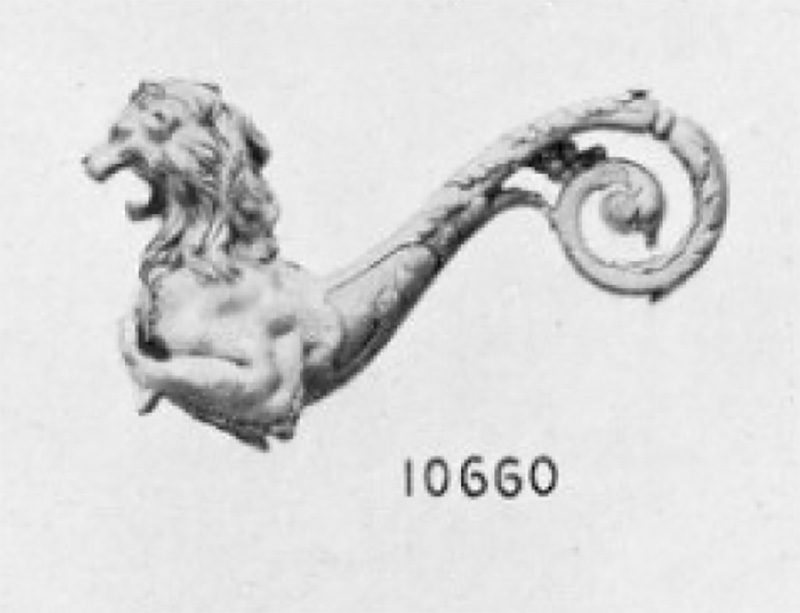Discriminate Doorknobs: The Delineation of Space at The Breakers
by Sébastien Dutton
The Breakers in Newport, RI, was completed in 1895 and remains to this day the largest house in Newport. A Gilded Age “summer cottage” now owned by The Preservation Society of Newport County, Alice Gwynne and Cornelius Vanderbilt II commissioned Richard Morris Hunt to build the home after an earlier house burnt to the ground in 1892.
The first floor interiors at The Breakers were designed by Allard et Fils, a prominent French decorating firm discussed in the following article by my colleague Mathilde Tollet. The second and third floors were executed by Ogden Codman, an American architect, interior designer, and co-author with Edith Wharton of The Decoration of Houses (1897).
Both the public and private spaces in The Breakers are glittering showpieces of architecture and design, seemingly down to the smallest detail. These details caught my eye and captured my interest, specifically the hardware found on doors throughout the house. Through my research I have endeavored to ascertain the variety of hardware styles found and the corollary with the room in which the hardware is located. I was also keen to establish if the hardware delineated a hierarchy of space at The Breakers.
I documented every lever handle, door knob, crémone, and espagnolette in the four main floors of the house. The variety found is vast, with 30 different individually identifiable styles accompanied by an additional array of rim locks, push plates, back plates, and key holes (figure 3). The broadest range (20 of the 30) were found in the Allard et Fils rooms on the first floor, which vary in style from Renaissance to Louis XV.
The hardware on the side of the door within each room matched the style of that space, with that on the other side aligning with the design of the adjacent room. In the Breakfast Room (figure 1), for example, an ornately carved door with Louis XV style hardware was backed on the other side, leading into the Butler’s Pantry, with oak paneling and a utilitarian lever (figure 2). This contrast clearly denotes the intended uses and social hierarchies for the two spaces.
Moving upstairs onto floors designed by Ogden Codman, the variety of hardware decreases but the delineation of spaces using hardware remains. On the fourth floor, entirely devoted to servant spaces, a single style of hardware was used.
After the cataloguing was complete, I reexamined the hardware, finding the maker’s mark “ST” (figure 4), associated with Maison Sterlin, a French hardware manufacturer established in 1782 that operates today under the name Bricard. Analyzing a catalog from the company, I was able to match up nearly all of the models found in The Breakers (figures 4-7). The simple elements purchased for the servant spaces on the fourth floor were supplied by a Boston-based company called Burditt and Williams.
A question remains regarding the original location of some hardware. A number of doors are missing elements, either from damage or removal, while others feature knobs that were not intended for the location. Further research will expand beyond the knobs and levers themselves to examine the rim locks, key holes, and hinges, as well as explain the varying heights of the hardware mounts from room to room and door to door. Was the placement linked to protocols followed by the service staff? For a topic that seemed simple on the surface, this project has opened the door to additional questions.
Sébastien Dutton is a Research Fellow at The Preservation Society of Newport County who spoke at their Emerging Scholars Colloquium in collaboration with the Decorative Arts Trust in February 2020. He is in the Design Studies & Historic Preservation graduate program at Boston Architectural College.
A print version of this article was published in The Magazine of the Decorative Arts Trust, one of our most popular member benefits. Join today!


